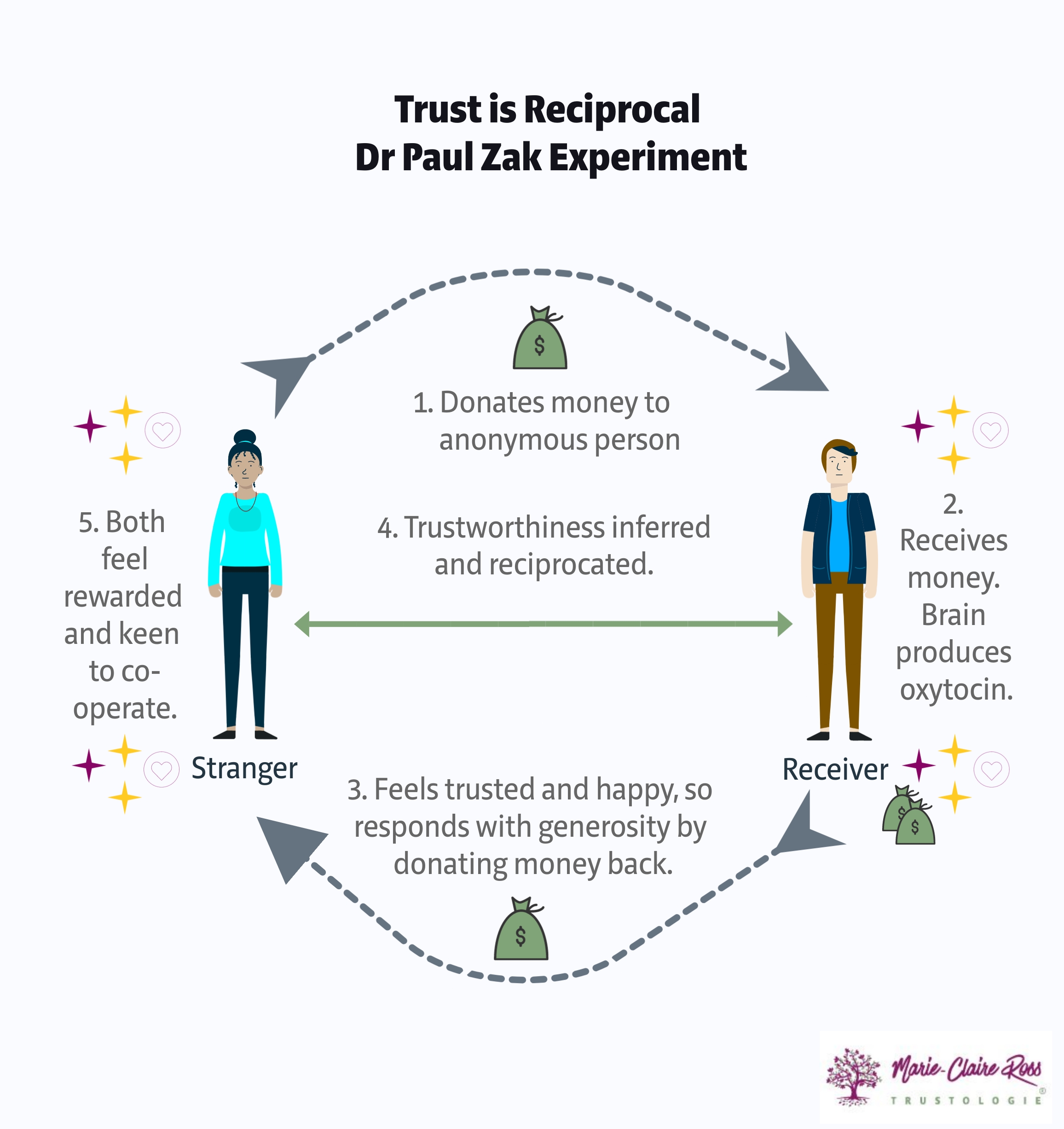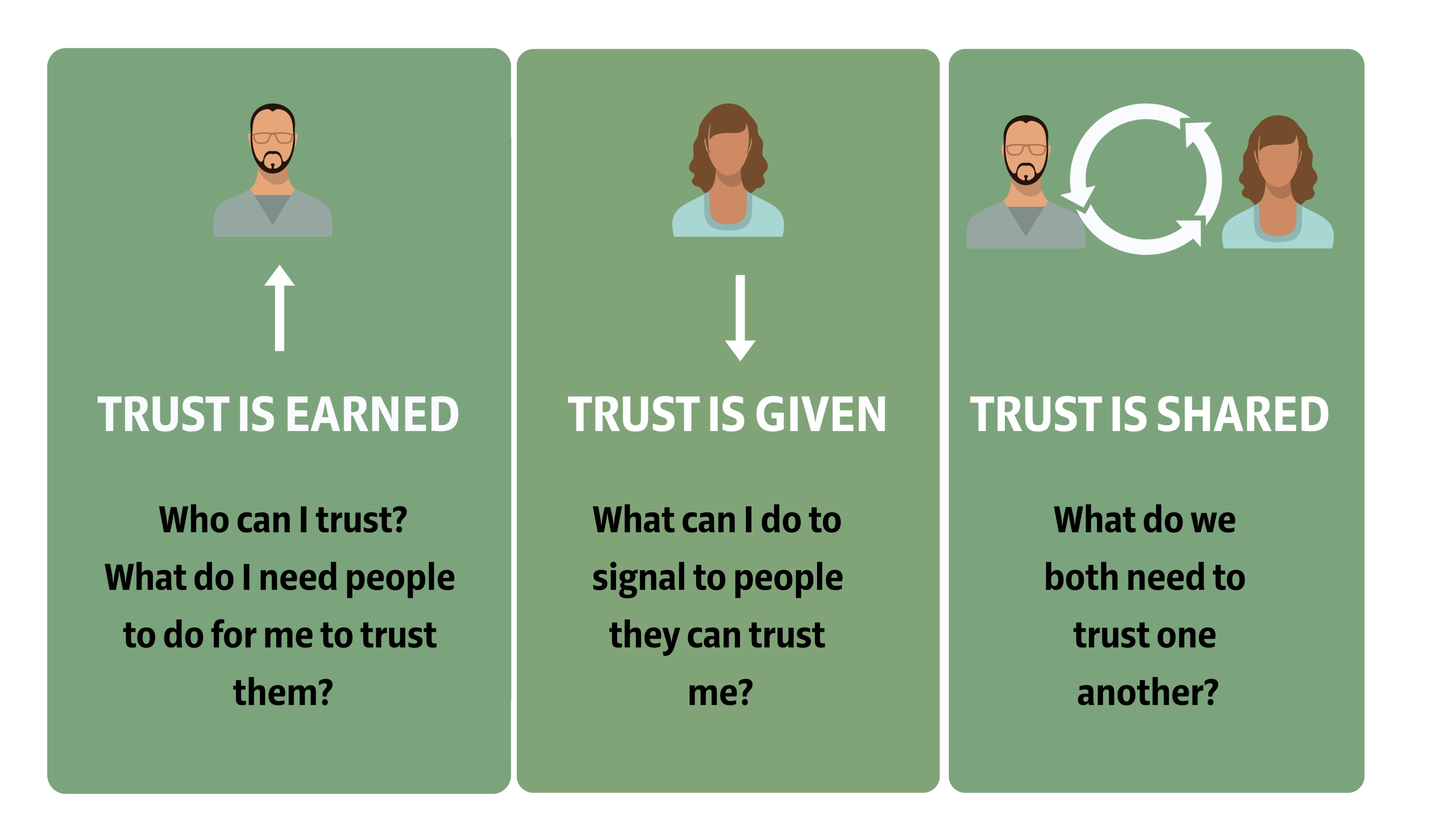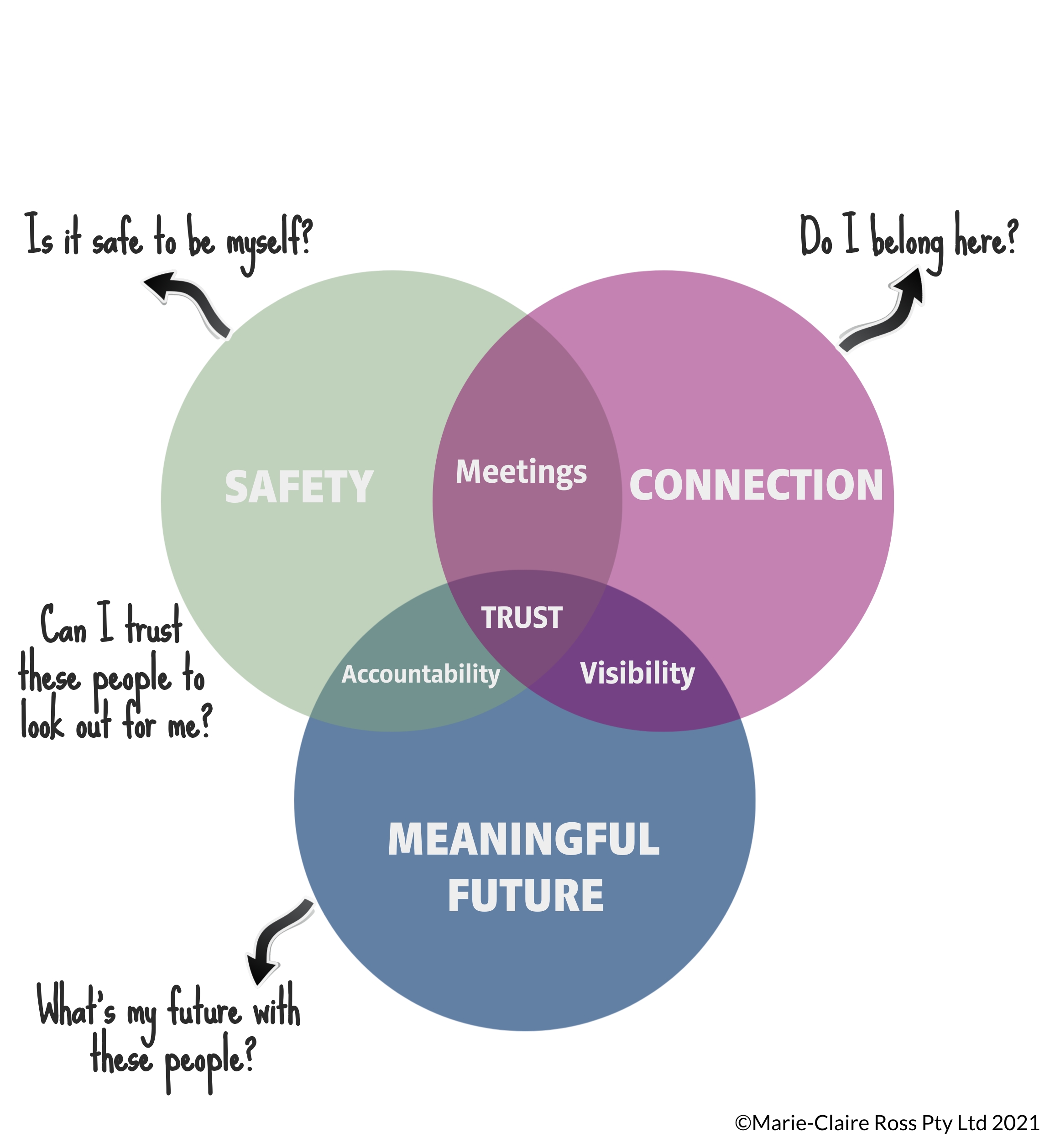
Most leaders understand the importance of building trust in their teams and across them.
Yet, throw in a bit of risk or uncertainty and leaders become reactive - not...
How do you make the decision to trust others?
That's the question that Jim Collins asked his mentor some years ago. Collins is a student and teacher of what makes great companies tick. He is also author of some of the best business books around such as Built to Last and Good to Great.
In an interview with Tim Ferriss, Collins talked about when he started out as an entrepreneur he was badly bruised by others he trusted. He turned to Bill Lazier for advice, one of his teachers at Stanford, who told him about the trust wager.
Essentially, the trust wager is your stance on how you make decisions on how to trust people. There are two choices:
1. I believe people are trustworthy. (Trust is given). Your opening bid is trusting people. They lose it if there is irrefutable evidence that they have abused your trust.
2. I believe people have to earn my trust. (Trust is earnt). I’m not necessarily going to trust you, but through evidence and experience you will earn my trust.
According to Lazier, he himself chose to expect the best from people knowing that they can sometimes disappoint. He understood that both perspectives had upsides and downsides.
If you take the stance of mistrust, you may prevent a hurtful experience. The downside is that you will lose trustworthy people and miss out on potential opportunities.
On the other hand, when you trust people from the start, it gives them the opportunity to rise to the occasion. But the downside is people may take advantage of you.
Critically, Lazier's challenge to Collins was "Have you ever considered the possibility that not everybody is one or the other but because you trust them at that outset, they are more likely to become trustworthy because you trust them?"
Lazier believed the trust wager was one of the biggest decisions you could make in life.
But here's the thing, science has given us some important information on how we trust, since that discussion over thirty years ago.
Back in the early 2000's, Dr Paul Zak, a neuroscientist, ran a multitude of studies on trust. What he found was that when someone tangibly trusts a stranger the brain produces more oxytocin.
In experiments, blood was drawn before and after people were trusted in situations to measure the surge in oxytocin.
Oxytocin is the happy feeling we get when we are around good friends. It’s that feeling that makes us perform acts of generosity and it is produced through positive social interactions.

The reality is trust is measured in both directions. Yet, we look outwards at the world to see how we can trust. We tend to focus on wanting to give trust or see it demonstrated, but fail to actively seek to build it with others.
When we co-operate and look out for others or when people trust us, oxytocin rewards us with feelings of security, trust, belonging and camaraderie. It creates a virtuous cycle where the more everyone trusts each other, the more they feel better about themselves and one other.
The ultimate expression of trust is when it is shared or reciprocated.
In any workplace relationship, both parties are responsible for building trust. Yet, we speak about it in one-way terms such as "How can I get people to trust me so I can push through this initiative?" or "He doesn't get his work done on time, so I can't trust him."
The best form of trust we can aim for is when both parties openly work towards understanding each other's expectations, ways of working and a shared understanding of how to trust one another. We stop using "I" language and both move to "we."

How we trust in the workplace - with our direct reports and co-workers, is also very different to how we might trust a supplier, a financier or a new LinkedIn connection.
Let's take a look at these approaches in more detail.
Starting a relationship by withholding trust is extremely damaging. When we demand that trust has to be earned, we forget that other people are also assessing whether we can be trusted. Not only does this send the wrong signal out to others, but it stops the opportunity for oxytocin to flow, on both sides. It wastes a lot of time and can create a tense relationship from the start.
After all, most people when they feel that they aren't trusted, for some reason, will play up and show that they are not. The reality is we only trust people who trust us. We don’t trust people who don’t trust us.
Low trust people trust tend not to trust others creating a cycle of distrust that impacts everyone around them. It also becomes part of their experience creating a dangerous self-fulfilling prophecy.
An old school approach with new starters or employees building up their competencies is to throw them into the deep end and expect them to prove that they can be trusted. It's a traditional approach that most people now say is pretty bruising and not supportive.
While it makes sense for a leader to not trust an employee who is new to their job, withholding help or support works against the new employee.
We also place people into the "trust is earned" category because they have disappointed us in some way. Over time, if you decide that they do a good job, then they can move back up to a "trust is given" working relationship.
This is a positive, opening trusting position that's great for our brains and wellbeing.
People are more likely to rise to the level of trustworthiness we expect of them, when we trust them from the outset.
The problem becomes that you have now set up a rollercoaster situation where you cycle through trusting someone and then not trusting them. It's pretty frustrating for both you and them.
While it is the right opening stance - it is not enough on its own. Your employee must also be encouraged to start with trust. Otherwise, you will be talking past each other and not properly understanding the other person's perspective. No matter how positive your original intention.
Typically, we start a working relationship either being too trusting or taking the stance of mistrust. But what if we started by getting clear together on how to trust one another from the outset?
This trust decision is based on the premise that both parties need to work towards trusting one another. This can be done through talking about what each person needs to trust the other in a working relationship. It works towards both people starting with trust and working on maintaining the momentum.
It's both people agreeing with the stance: We believe we need to work together to trust one another. It's taking trust is given to a different level, in order to create a circle of trust that supports a collaborative approach.
A Deloitte Digital study found that one in four employees trust their senior leaders. Yet, 40% of leaders believed that their employees trusted them.
But this study basically encourages leaders and employees to talk past one another. There is no reciprocal relationship. It's an individualistic stance. A better survey question would be to find out how often leaders and employees both work towards trusting one another.
What leaders need to encourage is that trust is a dual responsibility. Both parties need to work together and have shared agreements on how they need to trust one another. It's about moving from individualistic one way thinking to collective thinking. It's about being clear and open right from the start.
From the outset, leaders and employees need to talk to one another to share their expectations about what they require so that they can trust the other person. This has to be done with each direct report because every person trusts differently. Taking a blanket approach to trusting others puts you back into the rollercoaster cycle that becomes exhausting over time.
Remember, when we look out for others, oxytocin rewards us with feelings of security, trust, belonging and camaraderie. It creates a virtuous cycle where the more everyone trusts each other, the more they feel better about themselves and each other. And yet few of us leverage this amazing opportunity to build strong, healthy working relationships.
When I ask my leadership students about which of the three trust stances they use, they usually default to trust is given or trust is earned. Rising up to the level of trust is shared is nuanced and not easy for our heads to get around in a world that favours binary decisions. It also means taking a different approach to building relationships at work.
Yet, understanding and practising this distinction is the art of great leadership.
The rewards of better collaboration, clear communication and expectations are when leaders encourage employees to share what they need to feel trusted in the workplace and vice versa. Yet, few leadership techniques work on this game changer in leadership.
If you want to learn how, then join my Leadership Mastermind where we work deeply on this very topic. You can also hear about the Leadership Mastermind in my free webinar today (if you register you will get access to the recording, if you can't attend live).

Most leaders understand the importance of building trust in their teams and across them.
Yet, throw in a bit of risk or uncertainty and leaders become reactive - not...

Every single moment our brains are scanning our environment and calculating whether we can trust the people around us. At work, we need to feel confident that speaking...